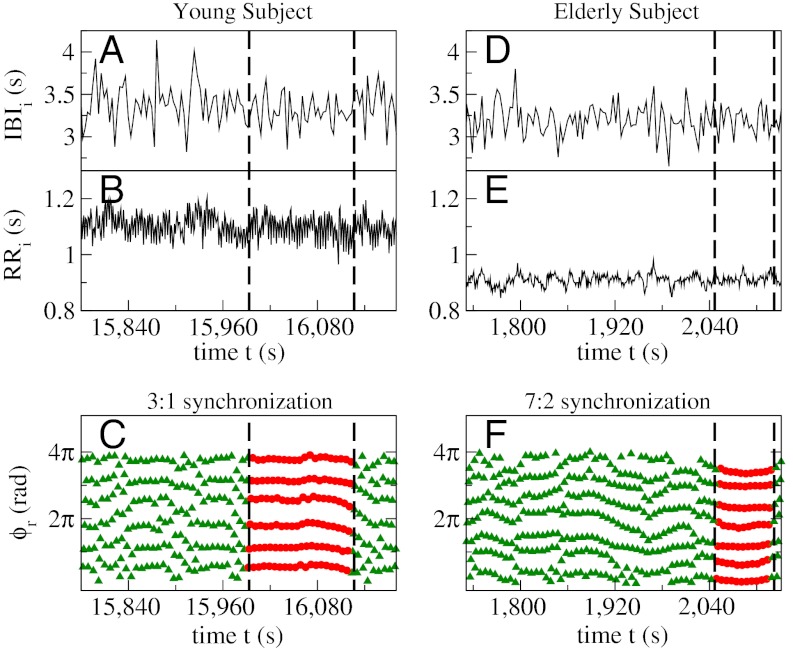Fig. 2.
Complex fluctuations in interbreath and heartbeat intervals, and corresponding cardiorespiratory synchrograms of a healthy young (Left) and a healthy elderly (Right) subject. Simultaneously recorded interbreath (IBI) and heartbeat (RR) intervals over a period of 400 s show higher variability for the young subject (A and B) and reduced variability for the elderly (D and E) subject (20, 21). Cardiorespiratory synchrogram for the young subject (C) obtained from the data in A and B, and for the elderly subject (F) corresponding to the data in D and E. Vertical dashed lines in C and F indicate segments of continuous phase synchronization (parallel, almost horizontal lines of red filled circles) between heartbeats and breathing cycles in the time intervals marked by vertical dashed lines in A and B, and D and E, respectively. An episode of 3∶1 synchronization is shown for the young subject (n = 6 heartbeats within m = 2 breathing cycles are consistently placed at the same respiratory phases ϕr over many consecutive breathing cycles), and a segment of 7∶2 synchronization (n = 7 heartbeats are synchronized with each m = 2 breathing cycles) for the elderly subject. Note that the young subject exhibits a longer period of CRPS despite significantly higher interbreath and heartbeat variability compared to the elderly subject.

